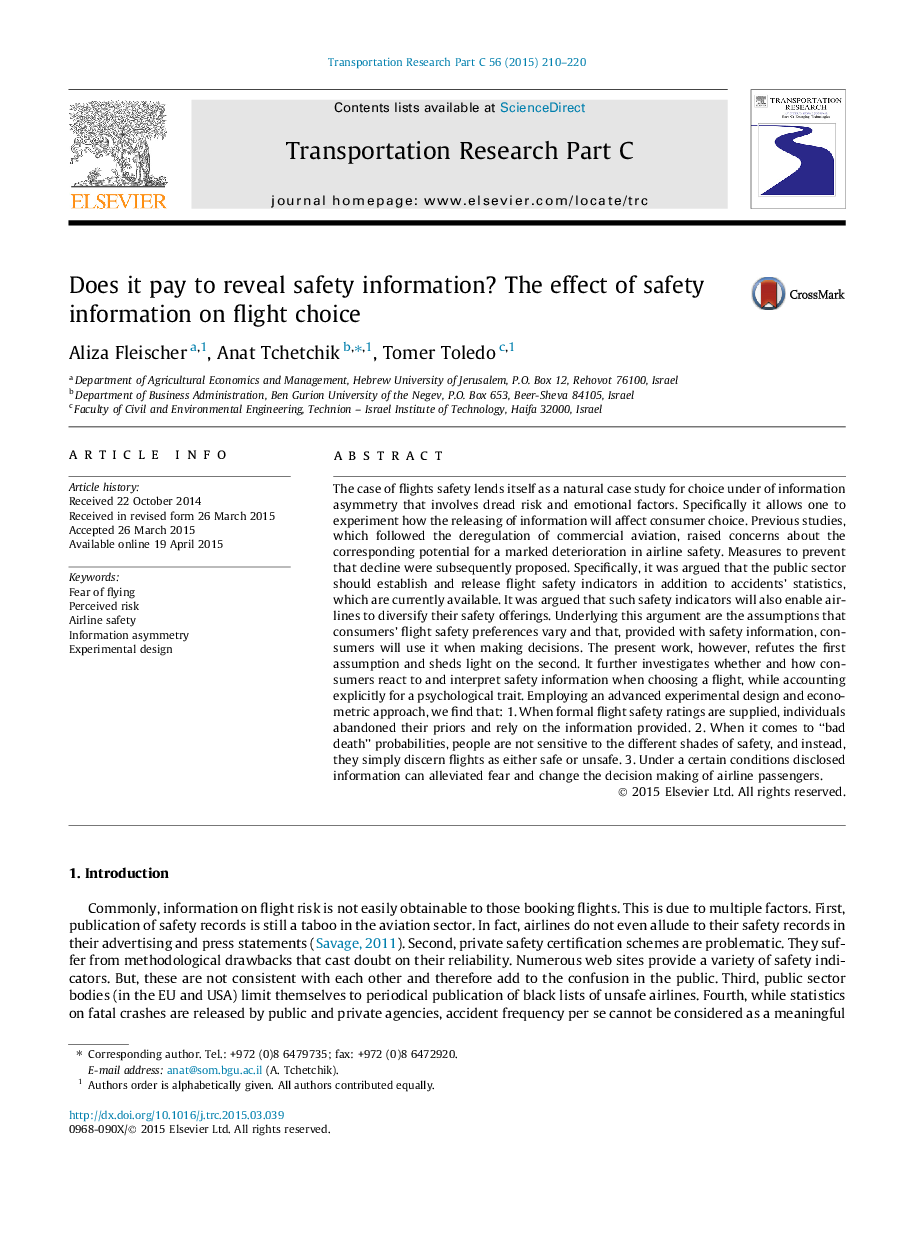| Article ID | Journal | Published Year | Pages | File Type |
|---|---|---|---|---|
| 6936750 | Transportation Research Part C: Emerging Technologies | 2015 | 11 Pages |
Abstract
The case of flights safety lends itself as a natural case study for choice under of information asymmetry that involves dread risk and emotional factors. Specifically it allows one to experiment how the releasing of information will affect consumer choice. Previous studies, which followed the deregulation of commercial aviation, raised concerns about the corresponding potential for a marked deterioration in airline safety. Measures to prevent that decline were subsequently proposed. Specifically, it was argued that the public sector should establish and release flight safety indicators in addition to accidents' statistics, which are currently available. It was argued that such safety indicators will also enable airlines to diversify their safety offerings. Underlying this argument are the assumptions that consumers' flight safety preferences vary and that, provided with safety information, consumers will use it when making decisions. The present work, however, refutes the first assumption and sheds light on the second. It further investigates whether and how consumers react to and interpret safety information when choosing a flight, while accounting explicitly for a psychological trait. Employing an advanced experimental design and econometric approach, we find that: 1. When formal flight safety ratings are supplied, individuals abandoned their priors and rely on the information provided. 2. When it comes to “bad death” probabilities, people are not sensitive to the different shades of safety, and instead, they simply discern flights as either safe or unsafe. 3. Under a certain conditions disclosed information can alleviated fear and change the decision making of airline passengers.
Related Topics
Physical Sciences and Engineering
Computer Science
Computer Science Applications
Authors
Aliza Fleischer, Anat Tchetchik, Tomer Toledo,
